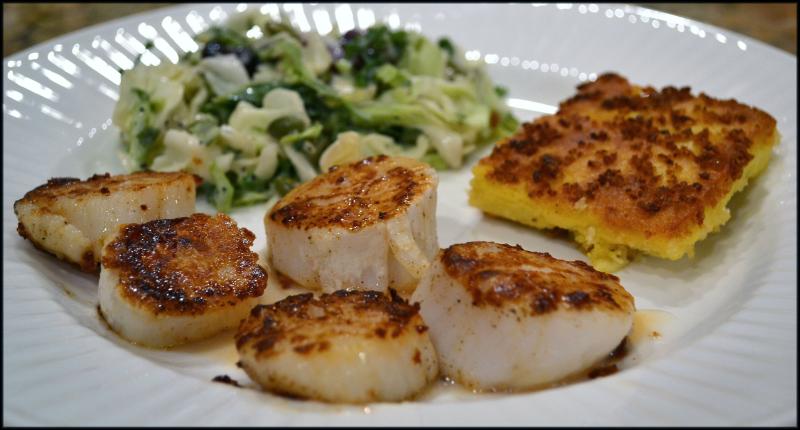Sous vide cooking offers consistency, flexibility
As you begin your holiday shopping, here’s an idea for the perfect present to give the creative cook in your life - a sous vide cooker. Sous vide (pronounced sue-veed) is different from the conventional cooking methods we’ve all used. Unlike broiling, roasting, grilling, sautéing, poaching, steaming or baking, sous vide cooking gives you absolute control over the cooking temperature.
Cooking sous vide entails bringing a circulating water bath to a precisely controlled temperature and then immersing your custom-packaged food into the water for a specific length of time. When using other cooking methods, you don’t have the same ability to manage temperature, resulting in food that may be thoroughly cooked on the outside, but not necessarily completely done at the center.
Another benefit of sous vide is knowing your cooked food will have exactly the desired texture. For example, all proteins from salmon to steak to eggs are very sensitive to temperature. Most of us have had the less-than-pleasant experience of expecting a smooth, soft-boiled egg with a slightly runny yolk and instead finding extra heat turned it into a thick, gelatinous blob. Or the salmon that went from barely warm to overcooked in a blink because of hot spots in your oven.
Sous vide cooking gives you consistency, flexibility and (most important) taste. With sous vide, you can re-create the same dish with the same results each time. Because the water temperature is constant, you can also hold the food until the last of your guests arrives without any risk of overcooking. Taste and texture of sous vide-prepared food is unmatched, with perfect flavor and tenderness.
The one disadvantage to sous vide cooking is the food’s appearance. Without grill marks or browning, your steak or salmon can look a bit insipid. The solution is to give the food a quick turn in a hot skillet or a moment under the broiler to add some color. If you look at the photo, you can see the way a brief 40 seconds in a skillet enhanced the appearance of these sous vide scallops.
If you’re looking to purchase a sous vide cooker, my recommendation is a sous vide immersion circulator. They clamp onto the side of your pot to provide controlled heat and regular circulation of the water bath. Earlier devices that have waned in popularity were called water ovens. They resemble microwaves and offer precise heating but without circulation, reducing the accuracy of the cooking process.
There are any number of sous vide “hacks” you can learn about on the internet. These include using rice cookers, crock pots, deep fryers or portable insulated coolers filled with warm water to approximate the sous vide process. As the price point of the simple immersion circulator continues to drop, these hacks seem far too much work.
The preparation of your food for sous vide cooking does not require any special equipment such as a vacuum sealer, just a sturdy zip-top, BAPA-free or reusable silicone bag. For foods like puddings, beans, cheesecakes and eggs, you can also use a standard canning jar, making sure it’s not filled too full and the two-part lid is just hand-tightened.
Most recipes will provide the specific temperature for the type of food as well as timing estimates based on whether or not you plan to add a “finish step” to provide color. I’ve included two recipes from my friend, Bob LaMorte, who has been experimenting with his sous vide immersion circulator to make salmon and scallops (among other dishes in his repertoire). Once you taste a dish that’s been cooked sous vide, you’ll understand all the fuss.
Bob’s Sous Vide Lemon Garlic Salmon
1 lb salmon filet
zest & juice of 1 lemon
1/4 t garlic powder
1/4 t black pepper
1/8 t sea salt
2 T drained capers
Clamp your sous vide immersion circulator onto a pot of water and set it to 115 F (if you are planning to skip the finishing step, set it to 118 F). Cut the salmon into 4 equal pieces. Combine the lemon zest, juice, garlic powder, salt and pepper in a small bowl. Sprinkle mixture evenly over the salmon and place in a zip-top bag. Before sealing, remove as much air as possible from the bag by immersing it in a bowl of water almost to the top. Place the sealed bag in the preheated water bath and set the timer for 30 minutes. After 20 minutes, preheat broiler to 550 F and place oven rack on the highest shelf. Place a piece of aluminum foil in a rimmed baking sheet and coat with nonstick cooking spray. When the 30-minute timer sounds, remove the bag from the bath. Gently place the salmon pieces in the prepared pan in a single layer. Broil the salmon until lightly golden brown, about 3 minutes. Garnish with capers and serve. Yield: 3 to 4 servings.
Bob’s Sous Vide Scallops
1 lb large scallops, side muscle removed
milk
salt & freshly ground black pepper, to taste
1 T olive oil
1 T unsalted butter
Rinse and drain the scallops, then place them in a bowl with just enough milk to cover; soak for about 30 minutes. Clamp your sous vide immersion circulator onto a pot of water and set it to 123 F. Drain the milk from the scallops, but do not rinse them. Season scallops with salt and pepper. Place scallops in a zip-top bag in a single layer and drizzle with olive oil. Seal the bag after forcing out as much air as possible. Place the sealed bag in the water bath and set the timer for 30 minutes. When the timer sounds, remove bag from the water bath. Remove the scallops from the bag and pat very dry with paper towels. Melt butter in a large nonstick skillet over medium-high. When the butter stops foaming, add the scallops and sear until golden brown, turning once, about 40 seconds total. Transfer to a serving plate. Yield: 4 servings.



















































